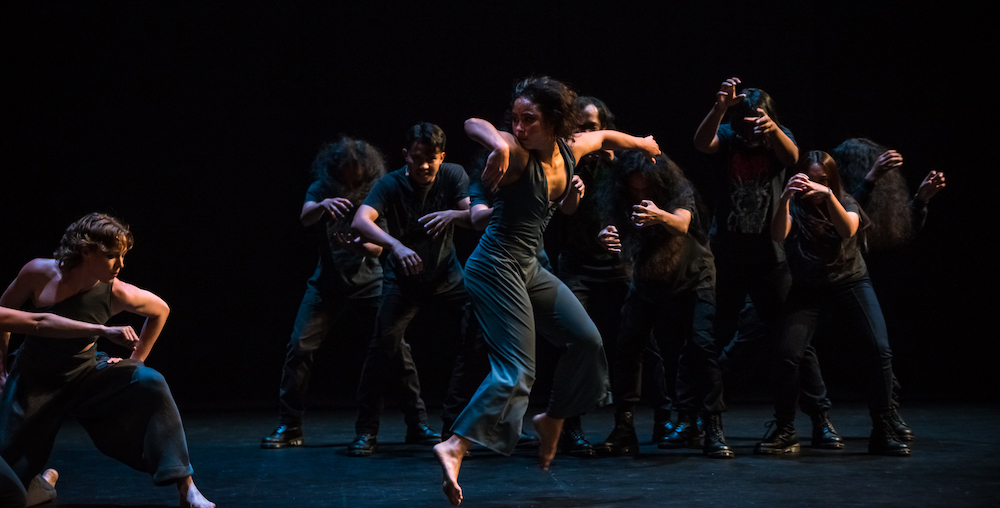Arts Centre, Melbourne.
24 February 2020.
It does not take long for the boundaries to be tested. Indeed, at times Metal pushes into terrain that polite bourgeois dance audiences may well find disturbing. Although we start sedately, in almost architectural abstraction, we soon plunge into dark primordial entanglement, where ritual and violence and raw sex emerge from the shadows, leaking from the unconscious into molten, ecstatic savagery.
When co-creators Lucy Guerin and Robi Rusdiana decided to bring their two starkly different forms and modes of practise together, the resulting alloy was always likely to contain volcanic elements. Guerin’s detailed and sculptural Western contemporary dance and Rusdiana’s Javanese choir of heavy metal throat singers are indeed a fissile combination, a collision of fine boned grace and muscular force, a meeting of the bestial and the formal. The result is a kind of pagan outpouring. The neat mechanics of modernity devolving to a jungle of animal power. Here, the night is full of cries, the safety of encampment soon to be invaded.
It may be a critic over-read to suggest that Guerin’s five dancers and the eight voices of Rusdiana’s Ensemble Tikoro have deliberately avoided the safe ‘blending of cultures’ aesthetic that underpins festivals like Asia TOPA, but Metal leaves its fractures visible. Indeed, it wants us to notice the incongruity, eschewing easy synthesis in favour of a bolder yin/yang. For all of its clearly rehearsed and deliberate process, it is the wild, the glinting edge of the blade, that shines brightest in Metal’s growling nocturne.
As such, the work has a much rougher musicality. Ensemble Tikoro’s deep toned and guttural sound lives outside the prim reductions of melody, and it is onto this ominous miasma that Guerin lays her movement palette. Perhaps taking the title as inspiration, we shift from machine-like solidity to melted forms, from precise detail to instinctive flow. The metal metaphor is evident throughout, and as a choreographic motif, it allows both dancers and singers to shift between states at a moment’s notice. The result is often arresting, mirroring the internal schisms that beset us all (despite our middle class finery).
Metal is, in some ways, a re-imagined Rite of Spring, and perhaps this will strike some as too derivative, a too obvious dance of opposites. Yet, the work has surprising moments of humour and spiritual beauty, most notably when Mita Siti Kulsam sings the haunting and lovely Rajah near the end.
In a zeitgeist of ideology and denial, Metal will ruffle the odd feather. Then again, just as our jewels are cast in metal, so too are the bullets we fire at one another.
By Paul Ransom of Dance Informa.

















